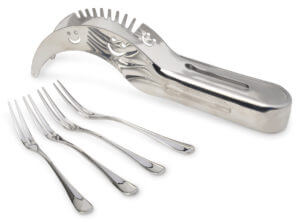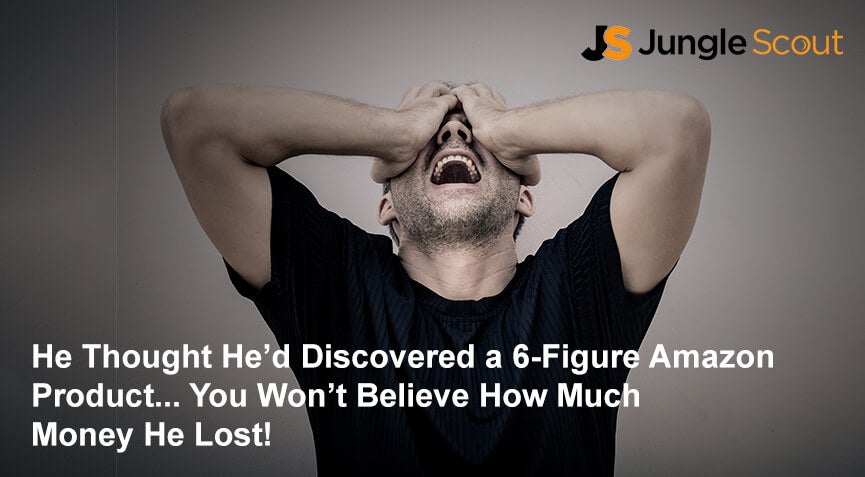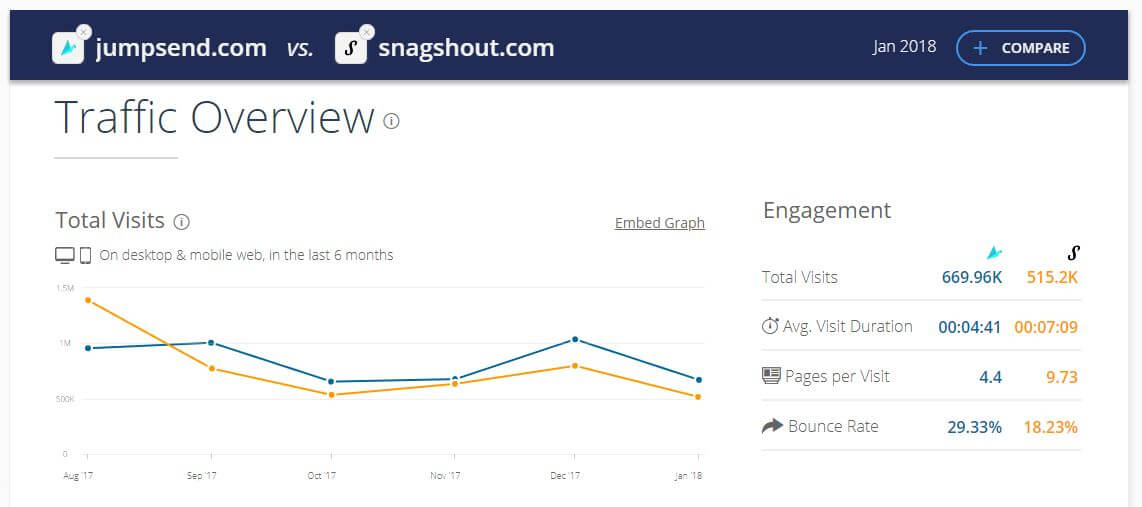Amazon is an awesome way to make money online. In fact, I’ve written time and time again that it’s the best low-risk/high-reward investment that you can make. However, it’s hardly a get-rich-quick scheme. And if you fail to have a proper product launch plan in place, you can lose money, too.
💰💰💰Keep reading to learn about how THESE FOUR SIMPLE STRATEGIES can turn your Amazon business into a MILLION DOLLAR EMPIRE.💰💰💰

You’ve got no product launch plan…
Does this situation sound familiar?
You’ve discovered a cool product on Amazon using an Amazon research tool. It seems perfect, selling way more than the 300 units per month that we suggest. In fact, it’s selling 1,000 units per month. There’s only one page of search results and all of the sellers only have a handful of reviews.
From there, you slip over to Alibaba and find an OEM that can produce 1000 units for cheap. Super cheap, in fact, just 1/10th of the average sales price. So you make a fast purchase. You want to rush to market, so you forgo a fancy box, altering the design, or even putting your logo on it.
But who cares, right? Your eyes are green dollar signs. All you can think about is all the profit you’re going to see in your checking account. Product launch plan? Who needs it!

A failure to launch (a lousy product launch plan).
Your product hits Amazon roughly 30 days later. You got it there quick. You slap together a listing and turn that sucker on. Here comes the big money!
The first day goes past. No sales.
Another day. Nothing.
Now a week’s gone by. Still nothing!
Okay, maybe this is normal, you think.
Jumping over to Amazon, you dig around for your listing.
But then your heart sinks: there’s now 15 pages worth of sellers for your product.
And to make it worse, your product is only on page 13. Oh yeah, and there’s four other products that look exactly like yours.
But that’s not all. You didn’t do anything to differentiate yourself, so now your listing is crawling with hijackers and they’re all beating your price point by $5 or more!
Now you’re furious.
You kept reading on the blogs and watching in videos “how easy” it was to sell stuff on Amazon, and how it’d give you that four-hour workweek lifestyle you crave.
Instead, you’re out $5,000 for a product that’s not selling!
Believe it or not, this actually happened to me!
Two years ago, I found a product that was almost exactly like the one above. It was a watermelon slicer.

It was a brand new gizmo in 2015, and selling like hot cakes. There were only 16 sellers selling it when I discovered it. Each seller was averaging 1,000 units per month. The top seller had only 30-some reviews.
Jackpot, right? 💰
I found a wholesaler selling the products on Alibaba. They were only asking $3 each, including shipping. I could get them into the US in just three weeks. Thus, I pulled the trigger on 1,000 and off they went.
Four weeks later they were up on Amazon.
But now there were over 100 sellers selling watermelon slicers. My product landed on the 13th page. And no matter how much I spent in ads or how many promos I gave away (late in the game), I never got it past the 9th page.
Furthermore, my listing was crawling with hijackers. But since it had no branding or logos, there was no way for me to get rid of them either!
Total product failure.
To this day, I still have about 300 watermelon slicers sitting in my garage. collecting dust.

What did I do wrong?
Looking back, there were a lot of big no-nos I did.
- I didn’t have a good product launch plan. I thought that buying enough units and throwing them up on Amazon was all I needed to do.
- The only metric I looked at was sales estimation. Had I used Jungle Scout to check its opportunity score, I might have known it wasn’t a good product.
- I should have been more patient and tracked the product for a week or longer.
- When sourcing, I did nothing to brand or improve the product. I just “copy-and-pasted.”
- I failed to give away enough promotions to start things off.
- Also, I didn’t track profitability. I kept throwing money at ads.
- Another mistake I made was setting a single price and never testing alternative prices with A/B testing.

What did it cost me?
A lack of a proper product launch plan cost me plenty.
Sure, I made roughly $6000 in sales (300 units @ $15/each), but let’s look at what I lost in the process:
Samples: $50
Manufacturing/Importing Costs: $3,000
Shipping to Amazon: $200
Amazon Fees: $1800
PPC Ad Costs: $700
Promotional Giveaways: $5000
Shipping Back to Me: $150
Total Costs: $10,900
Net Loss: -$4,900
Ouch.

Learning from my mistakes (getting a good product launch plan with Jungle Scout).
Another big mistake that I failed to mention was the failure to keep learning more about the Amazon selling process. I figured that since my first product was a success, I was billy bad-ass about it. Not the case.
I swallowed my pride and did some learning.
And what I learned was eye-opening.
You see, there’s one more major mistake that I made that I failed to mention.
Had I known then what I know now, I probably could have saved myself that near $5,000 loss.
That major mistake was failing to use the right tools because I was afraid to spend a little money. I thought using just the Jungle Scout lite version was all I needed.
I thought I was clever.
“I don’t need to spend a couple hundred bucks to do this… all I need is this one tool here.”
Let’s break it down…
Just this one other tool would’ve provided me a return-on-investment of 1230%+ instead of a $4,900 loss.
First, let’s consider the initial research with the watermelon slicer disaster. All I did was use Jungle Scout’s Extension to get the sales estimates for the watermelon slicer. I didn’t use the web app back then. “Why should I? It seems gimmicky!”
With a little patience and using the product tracker, I could have seen that the watermelon slicer’s opportunity score was dropping little by little each day as new sellers entered the market.
In three weeks the product went from a 9 to a 2.
That alone probably would have saved me $4,900.
So how much does Jungle Scout cost?
Jungle Scout’s subscriptions start at $39 per month with the Basic plan. And you save $240 when you choose the annual plan!
That pitiful $39 that could have saved me $4,900.
That is essentially a return-on-investment of 1230%.
I’d say that’s worth it, wouldn’t you?
Not only would it have saved me thousands of dollars, but the other tools in the upgraded suite (only $20 more) would have pointed me to better product opportunities with the niche hunter and product catalog tools. In fact, that’s how I found my next product was with the niche hunter.
The Web App’s Niche Hunter Earned Me $18,000 in the first 90-Days of Using It
That product that I discovered was an opportunity 7 product. I tracked it for two weeks. No change. So I bought it.
With about $4,000 in all-in costs, that product went on to make over $18,000 in net profit its first month on Amazon.
No joke.
So really, the niche hunter earned me 462 times what I spent on it in just the first three months.
It gets better (and worse)…
Unfortunately that product didn’t always stay a hot seller. Other competitors entered the market after me. Eventually, it went from a 7 opportunity to a 2.
But guess what? I was tracking it the entire time. So when it was time to put in a new order, I decided to hold off and cancel the product. The last few units I had sold slow, too, so I knew I made the right decision. Had I ordered another $4,000 worth of inventory, I may have lost more money.
Saved by the product tracker!
The Web-App has been a key component of every product launch plan since the watermelon slicer disaster.
“My team loves Jungle Scout as it is the best Amazon software out there. I love Jungle Scout’s creator, Greg Mercer. He has a teacher’s heart. He doesn’t just create a tool. He educates his users all about succeeding on Amazon and using Amazon as a tool for personal success.”
Robert Kiyosaki, Author of best-selling self-improvement guide Rich Dad Poor Dad
I left profits on the table.
Another huge mistake I made with the watermelon slicer was pricing it wrong. Since I had no real product launch plan in place, I just did what every other selling noob does: I raced to the bottom.
My product started at $18… then $15… then $12… and finally $9.
Any less, it would turn into an “add-on” item.
Of course, it’s possible that I might have made even more profit pricing it higher.
In the world’s most awesome book on consumer psychology, Influence: The Psychology of Persuasion, the author Robert Cialdini shares a friend’s tale of turquoise jewelry she was having trouble getting rid of in her New Mexico tourist shop. Looking to liquidate all of it just before leaving on a big trip, she left a quickly written note for her employee: “price these x 1/2.” However, her employee misread it as “price these at x2”–double the current price!
Whoops!
Or was it?
Well, maybe not-so-whoops.
When Cialdini’s friend returned from her trip, she discovered that all the jewelry had sold out! Turns out that the higher price made people think that it was more valuable than it was.
“To customers, mostly well-to-do vacationers with little knowledge of turquoise, were using a stand principle–a stereotype–to guide their buying: “expensive = good.” Thus the vacationers, who wanted “good” jewelry, saw the turquoise pieces as decidedly more valuable and desirable when nothing about them was enhanced but the price.”
Robert Cialdini, Influence: The Psychology of Persuasion
Perhaps a similar product launch plan could have worked with the watermelon slicers? Of course, I’ll never know because I never tested it with split testing.
The power of split testing.
Another valuable lesson I learned when I started up my post-watermelon slicer product was trying out different prices. The new product (the one I made $18,000 in the first month on Amazon) was in a category where everyone was selling for less than $19.95.
Remembering Cialdini’s advice, I thought, “How can people know anything about this product?” It was a bit unusual, much like the turquoise, so perhaps there was an opportunity to price it higher.
So I did a little split testing. For the control, I set prices at $19.95 along with every other product in the category. And for the B-test, I set prices at $27.95, eight dollars higher than the next cheapest product.
And you won’t believe what happened next!
Not only was it more profitable (obviously), but I was actually selling more products at the higher price!
At $19.95, I was selling about 6 units per day.
But at $27.95, I was selling 12 units per day.
Crazy, right?
Had I stuck with the low price, I would have missed out on $40.80 in daily net profits, nearly 40% more than I would have priced lower.
But how’d I split test it so easily?
 Introducing Splitly…
Introducing Splitly…
Splitly is another app that’s quickly joined my collection of seller tools and now is a firm part of every product launch plan.
With just that one product, I was earning an extra $1,224 per month in net profit. And since the basic version of Splitly gives you 3 concurrent tests (plus a few more bonuses I’ll get into in a moment), I could, in theory, earn as much as $3,672 extra profit each month thanks to a little experimentation.
Plus, Splitly gives you the following goodies:
- Algorithmic split testing done by artificial intelligence.
- Keyword rank tracking. Monitor your rank for the most important keywords
- Automated pricing optimization. Always be one step ahead with Profit Peak, an artificial intelligence powered optimization tool.
- The ability to test pricing, images, titles, features, descriptions and keywords.
- FREE setup consultation.
So what does Splitly cost?
All of that plus the potential to earn 40% more profits per product. One could easily price this sucker at $1,000 per month. In fact, that’s what our competitors charge. Seriously!
But that’s nuts!
We won’t even charge half that. Or even a quarter of that.
Splitly’s starter package is only $47 per month and gives you 3 concurrent tests and 100 tracked keywords.
“A/B testing on Amazon is a no brainer for anyone who wants to truly optimize their listings. Splitly automates the whole process for you and makes it super simple to test different prices, images, titles and more. I’ve been able to squeeze out an additional 20% of profit from my products through A/B testings with Splitly.”
Kevin Rizer, 7-Figure Amazon Seller/Private Label Podcast

Everybody loves cheap/free stuff!
Another big issue I had with the watermelon slicer’s product launch plan was failing to send out enough promos. I lowered the price and offered a few, but had I used the right strategy, I probably could have ranked and sold way more products.
The Promo Ranking Tactic
If you haven’t already heard of this method, you’re in for a treat.
When a product lands on Amazon, it gets pushed “to the back of the line”, so to speak. Remember my stinky watermelon slicer was found on the 13th page of search results.
Amazon will keep you there until it learns that your product is relevant and people want it.
The best way to do that is to sell a lot of those products.
Big duhhhhhh, right?
“Okay, but how do I do that if no one can see it?” you’re probably asking.
With promotions, of course!
Essentially, you set up a promotion–usually 50-90% off–and then advertise it on a promotional website. From there, people looking for a great Amazon deal buy up your product. This makes it seem like your product is pretty popular. So Amazon starts to rank it up.
It’s a pretty simple strategy. Sure, there’s a little cost to sending out cheap items to buyers, but the return is worth it.
After all, my watermelon slicer never got past the 9th page of the search results.
Again, chalk that up to a lack of a good product launch plan.
But the product I followed it up with ended up not only on the first page of search results but as the first overall result for the keywords I wanted.
That product went from selling 3-4 units per day to selling 15-20 units per day.
All thanks to the web’s busiest promotional giveaway site.

Introducing Jump Send.
Jumpsend is, by far, the web’s best promotional giveaway site. For starters, Jump Send does 23% more traffic than its next biggest competitor, Snagshout. Take a look at the SimilarWeb graph below for proof:
But that’s not all.
Unlike its competitor, Jump Send also comes with the following goodies:
- Automated email campaigns. Reach out to your customers and request seller feedback, reviews, and more (this feature isn’t offered by Snagshout).
- Over 100,000 shoppers. You have full access to shoppers, and they’re all looking to buy!
- Premium analytics. Know exactly what sort of promotional sales your making with our easy-to-use interface.
- Distribute unlimited coupons. There’s no limit to the number of coupons you can give to your customers, making massive promotional campaigns super simple.
So what does Jump Send cost?
Were you to use Snagshout for your promotions, not only would you have access to less sellers, but you’d only be able to list one product. And that’d still cost you $49 per month. Plus, it wouldn’t give you emails, so you’d have to use another email provider to get reviews/feedback, which could run you another $49 per month.
Jump Send starts you with 3 products and unlimited emails for only $47/month.
More traffic? More products? And unlimited emails?
Uh, sign me up, please.
“Jump Send helps me to grow my business without spending hours on tedious tasks. The time I save is worth the investment alone, but what’s even better is that it also has a profound impact on increasing my sales!”
Kevin David, 7-figure Amazon Seller
But how do I know how much I’m making?
Finally, there was one more area that I was really a dodo in.
In fact, I’m scared to admit that it’s something I’ve only recently started doing.
Looking back on the Watermelon Slicer of Doom™, even if I had an amazing product launch plan and used the Web App to track my products and then used Splitly to do split-testing and increase my profits by 40% and then used Jumpsend to rank and sell even higher volume… how would I have known how much profit I had?
The messy bookkeeper.
My business partners are always giving me shit about my books.
They’re a mess.
In the past, when I sold products on Amazon, I relied only on the impossible-to-decipher Amazon seller reports and countless Google spreadsheets to know how much I was profiting.
After a pretty heated call with a business partner a couple days ago, I knew that I had to change things.
Consider this: not knowing my actual profits could potentially lose me money.
It could cause legal problems.
And I might end up paying more (or less) taxes than I need to.
So to keep myself in the good graces of my partners, make lots of profits, and not get thrown in jail by the tax man, I needed one hell of a solution.
Introducing Fetcher.
Fetcher is accounting software geared towards Amazon sellers. It actually works directly with seller central to create reports and let’s you know to the minute exactly how much profit you’re making.
The best part? It takes less than 15 minutes to set up!
It was the one last missing piece of the puzzle to creating an effective Amazon business with a great product launch plan.
Check out all it offers:
- Product breakdown on a per ASIN basis
- Pay Per Click cost and sales analysis
- Product promotion tracking and real costs
- Amazon fees – storage, FBA and everything else
- Refund tracking with comparisons and costs
- Costs of Goods Sold tracking and calculations
- Inventory dashboard
- Professional Profit and Loss Statement
- Daily sales and profit email
38% gross margin
“Wow!” I screamed. I couldn’t believe it; I was actually making a 38% gross margin with my products. Thanks to Splitly, Jump Send, and JungleScout, I was creating perfect products. And with Fetcher, I knew exactly how effective those products were.
Fair warning: once you get Fetcher, you’ll find yourself obsessed. I’m constantly hitting refresh to see where my sales are each day. I barely even look at Seller Central anymore.
So what does Fetcher cost?
You get all this tracking and easily digestible statements. Were you to hire an accountant or bookkeeper on Upwork to do the same, you’d easily pay $300 or more a month.
But Fetcher’s not even 1/10th of that price.
It’s seriously my favorite software-as-a-service ever. If JungleScout is the gateway drug, Fetcher is the hard stuff. You’ll be hooked for life!”
“Before Fetcher, I was using spreadsheets and didn’t have a solid grasp on my Amazon business financials. It was tough with Seller Central and too time consuming to figure out myself. Fetcher is now the first and last stop in my daily routine. I can get all the numbers I need instantly.”
Scott Voelker, TheAmazingSeller.com
If I told you that spending $152 could earn you $6000 per month for the rest of your life, would you do it?
Picture this. There’s two sellers. The first seller, who we’ll call “Bill”, uses only Jungle Scout’s basic features. He didn’t want to spend any extra on the other subscriptions, even if it meant access to more advanced applications.
“I probably won’t need them,” he said, shrugging.
The second seller, who we’ll call “Kym”, uses the full suite of Jungle Scout products: the Chrome extension, Sales Analytics, Product Tracker, Supplier Database, Rank Tracker and more.
He spent less money to help him find a product to sell, but she walked away with access to tools to help her find a product AND grow her business successfully.
Who really got the better deal?
Bill’s Product Launch Plan vs Kym’s Product Launch Plan
Two Very Different Research Methods
At the start of his product launch plan, Bill researches a neat product. It has high sales–about 400 units per month–but he doesn’t know that Jungle Scout only rates it as a opportunity 5 product. And because he’s not tracking it, he doesn’t realize that the 400 units was temporary.
It actually only sells 200 units per month.
Meanwhile, Kym uses Jungle Scout and discovers an opportunity 8 product, selling 300 units per month. She puts it into her product tracker, and two weeks later sees that it’s unchanged.
Both Kym and Bill order their respective products on Alibaba. When their products arrive, they send them to their nearest Amazon fulfillment center.
Promos on Jump Send vs No Promos
Kym continues her product launch plan with a big promotional push which she advertises on JumpSend. Immediately, Jump Send’s 100k plus shoppers pick up her orders. Tracking her keyword ranking with Splitly, she watches as her product goes from the 10th page on the first day to the 5th page by the 5th day, and finally lands on the 1st page by the 10th day. After that, it levels off.
She doesn’t giveaway any more products than she needs to because she’s keeping an eye on rankings with Splitly.
As a bonus, she picks up a few reviews thanks to Jump Send’s unlimited emails.
Bill uses a few promos, but instead does it the hard way, contacting random people on Amazon who may or may not use the promo codes. He doesn’t track his rankings, so he has no way of knowing how fast he’s moving up. And since he doesn’t have automated emails, he gets zero reviews for his troubles.
Split-Testing vs No Split-Testing
After the promotional period ends, Kym starts testing her product’s price and images using Splitly. She discovers that one of her images converts better than the others. Furthermore, she sees that she can price her product nearly $5 higher without it affecting her sales or conversion rates.
Bill does no split testing. And since he failed to track his product and get a real feel for competition, he’s spending way too much in ads to get onto the first page. Even then, he has to price his product at $15 to compete. Without A/B testing he has no way of knowing if that’s the optimal price or not.
The Value of Knowing Your Metrics
Now that Kym’s got some real sales going through, she’s keeping track of her profits with Fetcher. She sees that her ads are a little higher than she’d like, so she makes adjustments. In a week, she’s already showing a healthy 29% profit margin.
Meanwhile, Bill has no idea how much profit he’s making. His product is priced low and he’s spending way too much in ads. Were he to put his sales data into Fetcher, it’d show that he’s actually losing money and showing a -7% profit margin.
One Business Will Succeed… and One Will Fail
After selling for three months, Kym’s Fetcher shows that she’s made roughly $6,000 in net profit. She’s currently ranking in the top five for three different keywords. Her product tracker shows that her product is still an opportunity 8 product, so she decides to reinvest her profits into a variation on her current product. If it’s half as successful as her current product, she’ll earn close to $4500 per month.
Poor Bill. He’s in the dark. But were we to use the same tools that Kym’s using, we’d see that the product category he’s in has further fallen to an opportunity 2 product. His profit margins have never gotten higher than a 3% loss. And had he used Splitly to A/B test, he probably could have eked out another $5 per item, thus putting him above water.
While Kym’s buying new products and thinking about what beach she wants to lie on (because with an extra $4500 per month rolling in, she won’t have to work a real job anymore), Bill’s complaining on Facebook how “selling on Amazon is too competitive and a total rip-off.”
And all it took for Kym to get there was an additional, measly $152 for all of those tools
Bill wasn’t a dumb guy or anything. He just made the mistake that so many do and failed to create an effective cost-benefit analysis. Those cheap, easy-to-use tools could have made him a fortune.
Conclusion
A solid product launch plan is one part education and one part using the right tools. Back when I launched my watermelon slicer, had I known then what I know now, I’m sure I would have had a much better product launch plan. I would have saved my self the trouble right away with the Web App’s research tools. Even beyond that, I would have launched with a fury thanks to Jump Send. Then, I would have optimized my profits thanks to Splitly which I could have easily reviewed with Fetcher.
Don’t make the mistakes I made.
Don’t lose $4,800 on a shitty product.
Formulate a good product launch plan.
Get the web-app and track your products.
Use Jump Send to launch promos and follow up with your customers.
Optimize your profits with Splitly.
And celebrate your metrics with Fetcher.
Trust me: it’s worth it.

 17 Comments
17 Comments










17 comments on “He Thought He Had Discovered a Six-Figure Amazon Product… You Won’t Believe How Much Money He Lost”